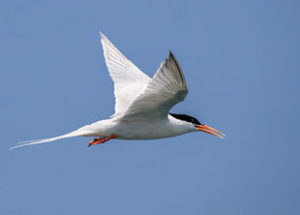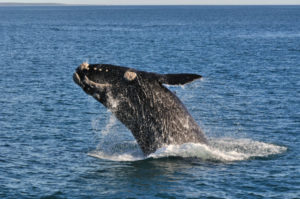Ecosystem
Nantucket Sound is a valuable ecosystem that must be preserved. It is home to many different species of wildlife and is central to the Atlantic Flyway – one of the largest migratory bird routes in the world. The region also includes parts of the largest winter habitat for waterfowl on the east coast of the United States.
The Sound sustains a wide variety of marine life, including fish, turtles, and seals. Accordingly, it is a valuable resource from which our local fishermen earn a living and feed consumers with one of nature’s best sources of protein.
Common & Endangered Species
Common eiders, black scoters, and surf scoters congregate in the fall and winter within the shoal waters in the hundreds of thousands. The coast of Nantucket Sound is also a breeding habitat for the piping plover and roseate tern – endangered species.
Land surrounding the Sound serves as a feeding and breeding ground to many different species of birds, including globally significant populations of the federally protected piping plover. The region contains pristine estuaries, extensive shoals, and long stretches of undeveloped coastline. Vast numbers of seabirds and waterfowl congregate on near-shore shoals to breed, nest, feed, and rest, especially during the winter season.
 While various species of terns are abundant in the coastal zone, including the common tern, least tern, roseate tern, and arctic tern, the northeast U.S. breeding population of the roseate tern was declared endangered in 1987. In recent years nearly 90% of the Northeast U.S. breeding population nested around Cape Cod. Four species of terns, all of which are state-listed and two of which are federally-listed species, breed in colonies on the near-shore environment and feed in the shallow shoals sprinkled throughout Nantucket Sound. Nantucket Sound itself, therefore, represents a key habitat area for tern foraging.
While various species of terns are abundant in the coastal zone, including the common tern, least tern, roseate tern, and arctic tern, the northeast U.S. breeding population of the roseate tern was declared endangered in 1987. In recent years nearly 90% of the Northeast U.S. breeding population nested around Cape Cod. Four species of terns, all of which are state-listed and two of which are federally-listed species, breed in colonies on the near-shore environment and feed in the shallow shoals sprinkled throughout Nantucket Sound. Nantucket Sound itself, therefore, represents a key habitat area for tern foraging.
The waters of Nantucket Sound provide habitat for several species of seals and porpoises, including the gray seal, harbor seal, and harbor porpoise. Once hunted to the edge of extinction within the Gulf of Maine, harbor and gray seal populations are once again on the rise within this region. These waters are particularly significant to gray seals which have a well-documented and growing breeding colony in Nantucket Sound, representing the southern-most breeding colony in the world, and the only known breeding colony in the United States.
Five species of endangered sea turtles are known to occur in Nantucket Sound: loggerhead, leatherback, Kemp’s ridley, green, and hawksbill. While these turtles arrive from thousands of miles away, it is unknown to what extent they use the Sound as a feeding or breeding area. The Center for Coastal Studies and others note that data gaps on species in the Sound raise important questions about the advisability of intensive development in the absence of baseline data.

Several different types of whales, such as humpback and minke, pass through Nantucket Sound on their migratory routes. Pilot whales are frequently sighted in the fall, while harbor porpoises migrate through in the spring. In addition, Atlantic white-sided dolphin, striped dolphin, and common dolphin sightings are also known to occur in this area.
Significant populations of endangered North Atlantic right whales occur to the south and east of Nantucket. Nantucket Sound is a recognized historic habitat for the North Atlantic right whale, and sightings of right whales in this area have been consistent and the frequency appears to be increasing. A 2010 map of cetacean sightings within Nantucket Sound and surrounding areas, prepared by the North Atlantic Right Whale Consortium, shows multiple sightings of right whales in Nantucket Sound. Several additional sightings of right whales were recorded in December 2014 and February 2015.

